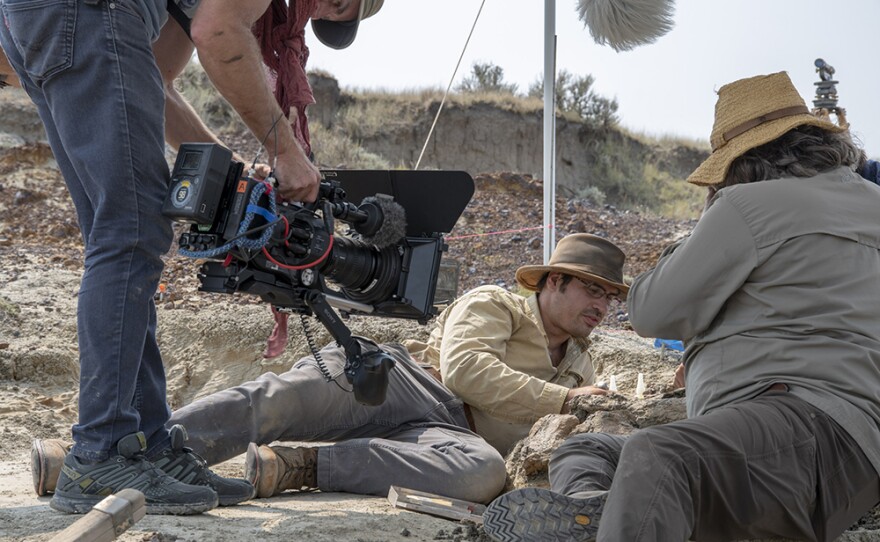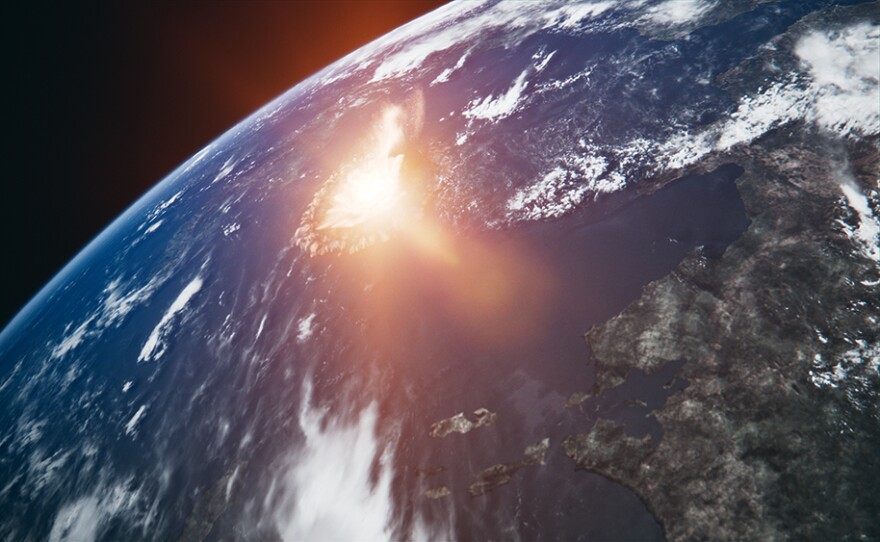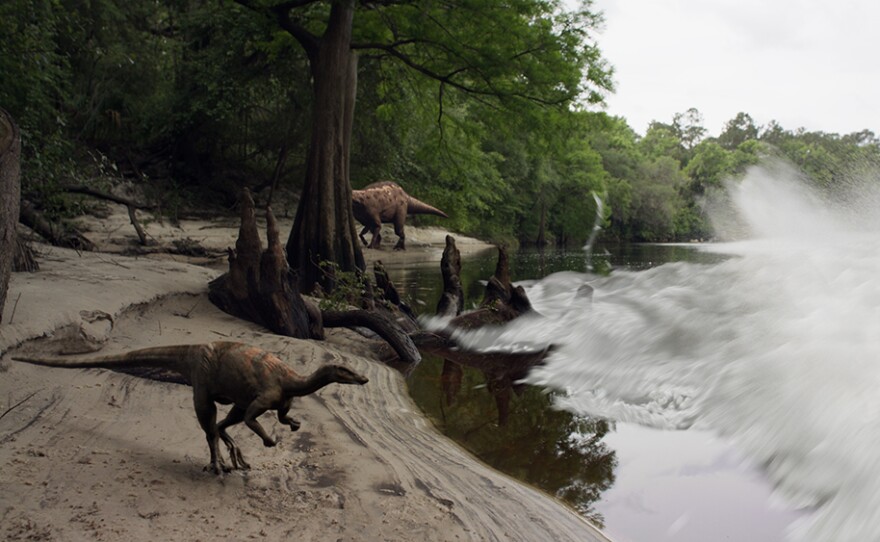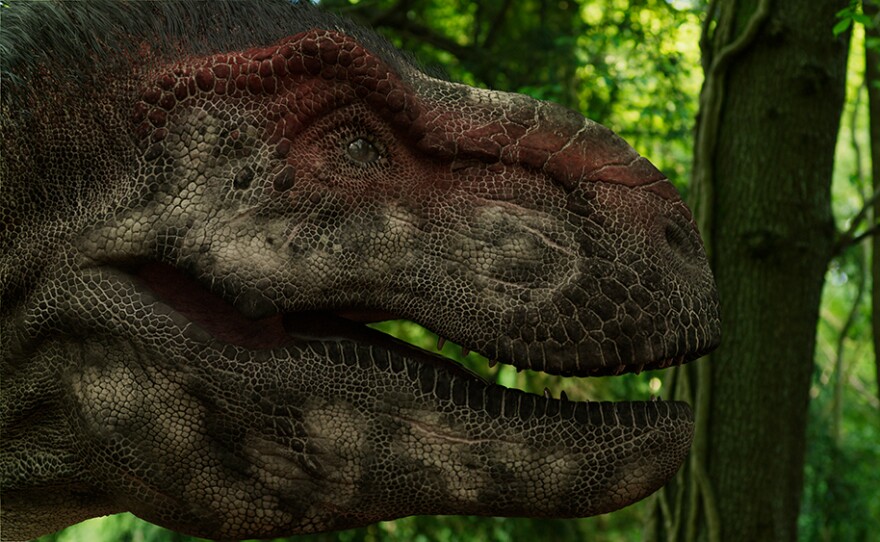Premieres Wednesday, May 11, 2022 from 9-11 p.m. with encore Sunday, May 15 from 2-4 p.m. on KPBS TV + May 15 from 9-11 p.m. on KPBS 2 / On demand with PBS Video App
NOVA: DINOSAUR APOCALYPSE explores how a wealth of newly uncovered fossils may provide a never-before-seen glimpse of events on the day an asteroid struck Earth, ending the age of the dinosaurs. Viewers follow host Sir David Attenborough and a team of scientists as they try to reconstruct a detailed picture of one of the unluckiest days for life on Earth in two back-to-back, one-hour episodes, "Dinosaur Apocalypse: The New Evidence" and "Dinosaur Apocalypse: The Last Day."

Sixty-six million years ago, a gigantic asteroid, larger than Mount Everest, slammed into Earth, killing the giant reptiles that had dominated the planet for over 150 million years. There is strong evidence of the impact, but no fossils of a dinosaur killed in the event itself have ever been found.

Now, at a dig site hidden in the Badlands of North Dakota, scientists have uncovered a wealth of fossilized creatures that might be connected to the fateful day that ended the Cretaceous Period. In DINOSAUR APOCALYPSE, Sir David Attenborough follows clues from this prehistoric graveyard, where a team of paleontologists uncover evidence they believe could help shed light on some dinosaurs’ final moments on Earth.

Filmed over the course of three years, the special follows paleontologist Robert DePalma and his team as they explore the site and ultimately unearth creatures that may shed light on life at the very end of the age of the dinosaurs. In both episodes, Attenborough examines some of the fossil finds with leading experts and follows the dig team as they carry out cutting-edge visualization and scanning techniques to reveal fossilized secrets invisible to the naked eye.

Stunning CGI storytelling, based on the evidence unearthed by DePalma and his team, is used to transport Attenborough back in time to the Late Cretaceous Period and bring the creatures that lived here to life. Interwoven with a range of expert interviews that provide scientific context throughout, the special follows Attenborough on a search for clues that could provide an unprecedented window into the last days of the dinosaur age and new insights into the events that may have unfolded when the Chicxulub asteroid collided with Earth.

As horrific and devastating as that day was, Attenborough reminds us that if it weren’t for the asteroid that ended the dominance of dinosaurs, tiny mammals would probably never have evolved into the amazing variety of creatures that now populate Earth–including us.
And he reveals one final rare piece of evidence from the North Dakota site: the fossilized feather of a dinosaur. It’s a reminder that the dinosaurs did not all go extinct when the asteroid hit. Members of one group, known as avian dinosaurs, survived, evolved, and still live among us today. We know them as birds.

What Tiny Fossils Tell Us About a Giant Extinction
- Add to Google Calendar
- Add to Outlook Calendar
Download ICS file
EPISODE GUIDE:
Dinosaur Apocalypse: The New Evidence premieres Wednesday, May 11 at 9 p.m. and Sunday, May 15 at 2 p.m. on KPBS TV + May 15 at 9 p.m. on KPBS 2 - In the Badlands of North Dakota, a team of scientists think they might have found the fossilized remains of animals killed on the day an asteroid struck Earth 66 million years ago. The evidence points to a catastrophic event, with a jumble of rare fossils, including a pterosaur embryo still in its shell and a well-preserved patch of triceratops skin, mixed in with tiny spheres of clay and glass that could be the fallout from the massive asteroid impact. Sir David Attenborough guides us on a search for clues that could give an unprecedented snapshot of what happened in the dinosaurs’ final moments on Earth.
Dinosaur Apocalypse: The Last Day premieres Wednesday, May 11 at 10 p.m. and Sunday, May 15 at 3 p.m. on KPBS TV + May 15 at 10 p.m. on KPBS 2 - In the second episode, the search continues for signs of what happened on the day the dinosaurs died. Scientists uncover extremely rare fossils and more evidence that could link the dig site in North Dakota to the asteroid that killed the dinosaurs 66 million years ago. Among the fossils are tiny spheres of glass locked in amber. Inside one of the spheres is a speck of rock that appears to be a chemical match to the killer asteroid itself. And scientists uncover one of the most spectacular finds of all: an almost perfectly preserved dinosaur leg. Sir David Attenborough guides us on a search for clues that could provide an unprecedented snapshot of what happened in the dinosaurs’ final moments on Earth.
Watch On Your Schedule:
Both episodes will also be available for streaming online atpbs.org/nova and on the PBS video app, available on iOS, Android, Roku streaming devices, Apple TV, Android TV, Amazon Fire TV, Samsung Smart TV, Chromecast and VIZIO.
Join The Conversation:
NOVA is on Facebook + @novapbs on Twitter #NOVAnext
Credits:
A BBC Studios Science Unit production with NOVA and GBH for BBC One and iPlayer, and PBS, co-produced with France Télévisions. The series is part of a co-production deal between PBS and BBC Studios. Commissioned for BBC One by Charlotte Moore, Chief Content Officer and Jack Bootle, Head of Commissioning, Science and Natural History and Executive in Charge for PBS is Bill Gardner, Vice President, Multiplatform Programming and Head of Development. Executive Producer is Helen Thomas and the Commissioning Editor is Tom Coveney. Executive Producers for NOVA are Julia Cort and Chris Schmidt. NOVA is a production of GBH.





